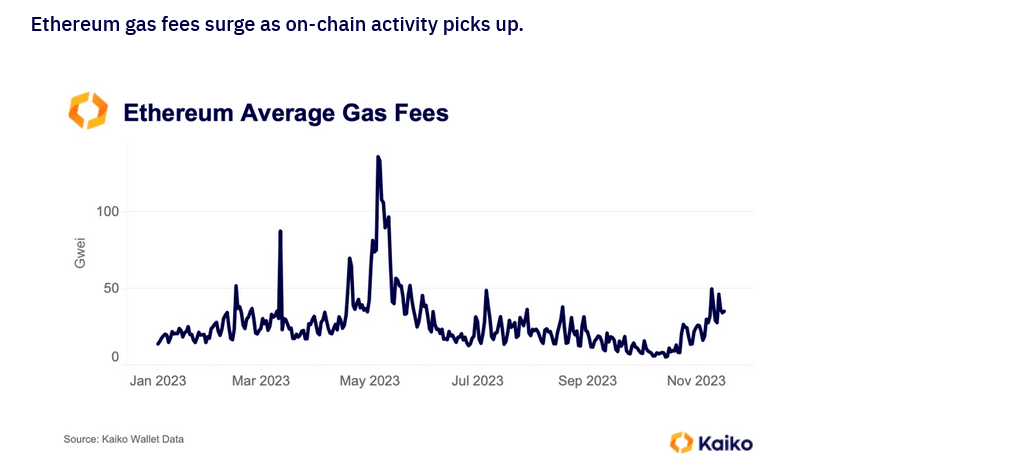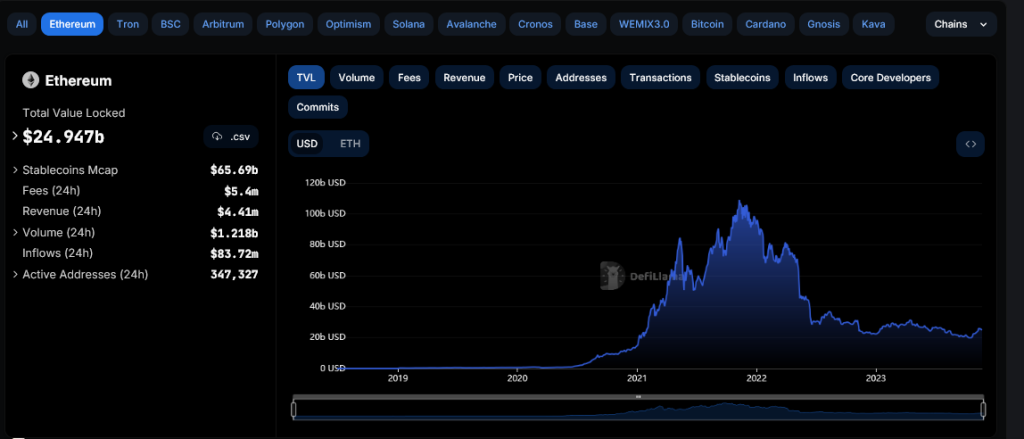Decentralized finance (DeFi) activity on Ethereum is gaining momentum based mainly on the trend of gas rates in the first three weeks of November, data from Kaiko shows. Despite Uniswap (UNI) leading the rebound, looking at the gas attributed to its activities during this period, UNI prices remain stagnant below $5.6, with the bulls failing to move higher and break to new highs in 2023.

Ethereum Gas Rates Rise, DeFi Revival?
According to Kaiko, a blockchain analytics platform, average gas costs on Ethereum reached a multi-month high last week. The platform explicitly notes that the main driver has been Uniswap’s activities, given the rising transaction volumes of meme coins, including GROK. This in turn increased demand for block space, causing gas rates to rise.
Gas rates remain volatile, but are generally higher in the first three weeks of November. From November 20, Ycharts facts shows that the average cost of sending a transaction was 45.13 Gwei, almost 100% compared to November 19, when it was 24.84 Gwei. This is a significant jump from 17.66 Gwei at the end of October 2023.
Gas fees and how ETH and DeFi token prices respond are directly correlated as DeFi and other on-chain activities such as non-fungible token (NFT) minting and trading rise; gas rates generally rise in trend markets.
Accordingly, the recent rise in gas rates could indicate that markets could be preparing for a rally, and tokens of crucial protocols including Uniswap or Aave could benefit.
DeFi TVL rises, but Uniswap remains stuck below $5.6
At the time of writing, the total value locked (TVL) across all DeFi protocols as of November 21st is over $46.6 billion, according to DeFiLlama. This increase is almost $5 billion more than in early November and higher than the $37 billion in mid-October.

Ethereum remains a platform of choice for deploying DeFi apps, despite the relatively high gas costs associated with mainnet scaling challenges. The smart contract blockchain pioneer manages $25.4 billion in TVL, while Uniswap is one of the largest protocols with $3.216 billion in TVL.
UNI prices, as written on November 21, are up 30% compared to mid-October. However, the bulls have failed to break above the November highs around $5.6. On the daily chart, trading volume, and therefore participation, has been declining even as prices have moved higher.
This formation suggests that the uptrend was behind low momentum and sustainability. Technically, there could be more gains if there is a solid close above the November highs on growing volumes. In that case, UNI could expand, retesting 2023 highs around $7.2.
Feature image from Canva, chart from TradingView

